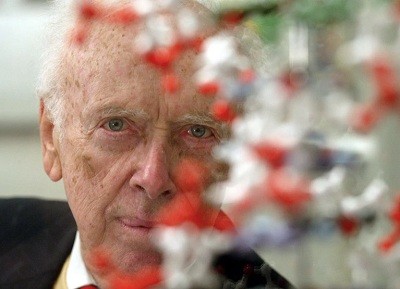Daily briefing: The complex legacy of James Watson
Article Meta
Article Date: 10 November 2025
Article URL: https://www.nature.com/articles/d41586-025-03692-3
Featured image: Image link
Summary
This Nature Briefing rounds up a set of short but important science stories. The lead piece reflects on the life and fraught legacy of James Watson — celebrated for the discovery of DNA’s double helix but later ostracised for racist and sexist remarks. The edition also highlights a surprising stellar stream discovered on galaxy M61 by the Vera C. Rubin Observatory, the launch of the African Medicines Agency and why researchers feel ever-more pressured to publish. Brief items cover conservation work in Greece and climate-summit travel tales.
Key Points
- James Watson: co-discoverer of the DNA double helix who helped launch modern molecular biology and the Human Genome Project, but whose legacy is marred by misuse of Rosalind Franklin’s data and later racist and sexist public statements.
- Watson’s career shows tension between major scientific contribution and personal conduct — institutions cut ties and his public standing collapsed.
- Vera C. Rubin Observatory’s first test image revealed a 180,000-light-year stellar stream on galaxy M61, evidence it cannibalised a smaller galaxy.
- African Medicines Agency (AMA) launches as a continent-specific drug regulator — aiming to address Africa’s genetic diversity, drug-response differences and changing funding landscape.
- Researchers report growing pressure to publish while time and resources for research decline; only 45% of surveyed scientists feel they have enough research time.
Content summary
James Watson, who died aged 97, remains a polarising figure. He and Francis Crick’s 1953 double-helix paper is one of biology’s landmark discoveries, setting the stage for cracking the genetic code and sequencing genomes. Yet the account of that discovery involves contentious use of Rosalind Franklin’s X-ray data and questions about fair credit. Later in life Watson made repeated racist and sexist remarks that led institutions such as Cold Spring Harbor Laboratory to sever ties and diminished his standing despite earlier mentorship and contributions.
The Rubin Observatory’s early data produced a surprise: Messier 61 sports a long stellar stream — a faint tail of stars showing it absorbed a smaller galaxy. The telescope’s enormous new camera promises many more such discoveries.
The African Medicines Agency begins operation after years of planning. Authors argue it could be transformative for Africa’s health research and regulation, given the continent’s exceptional genetic diversity and specific drug-response challenges, plus shifting global funding patterns.
A survey of over 3,200 researchers finds rising pressure to publish while available time for research falls; funding uncertainty, especially in North America, is a major concern. Short pieces mention civil-society flotillas heading to COP30 and a conservation biologist tracking Balkan chamois recovery in Greece.
Context and relevance
Watson’s story matters because it sits at the crossroads of scientific achievement, ethics and institutional responsibility. How science remembers and responds to problematic figures affects diversity, trust and the scientific record. The Rubin Observatory result is an early demonstration of next-generation survey power; astronomers will use similar data to map galactic interactions. The AMA is timely for anyone involved in global health, drug development or genomics: Africa’s regulator could shift how trials, approvals and regional research priorities are set. The pressure-to-publish finding ties into broader concerns about research culture, funding and career sustainability.
Why should I read this
Because it’s a neat, quick roundup that saves you time. You get the lowdown on a major — and messy — scientific legacy, a flashy astronomy win from a brand-new telescope, and a potentially game-changing health regulator for Africa, all in a few minutes. If you care about how science is done, governed and remembered, this is worth a skim (or a proper read).

